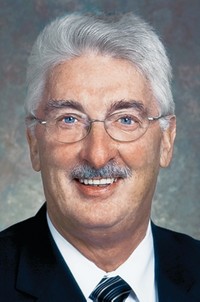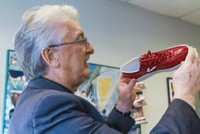Advertisement
Grab your lab coat. Let's get started
Welcome!
Welcome!
Create an account below to get 6 C&EN articles per month, receive newsletters and more - all free.
It seems this is your first time logging in online. Please enter the following information to continue.
As an ACS member you automatically get access to this site. All we need is few more details to create your reading experience.
Not you? Sign in with a different account.
Not you? Sign in with a different account.
ERROR 1
ERROR 1
ERROR 2
ERROR 2
ERROR 2
ERROR 2
ERROR 2
Password and Confirm password must match.
If you have an ACS member number, please enter it here so we can link this account to your membership. (optional)
ERROR 2
ACS values your privacy. By submitting your information, you are gaining access to C&EN and subscribing to our weekly newsletter. We use the information you provide to make your reading experience better, and we will never sell your data to third party members.
Materials
ACS Award For Affordable Green Chemistry
Sponsored by Dow Chemical and endowed by Rohm and Haas
by Jean-François Tremblay
January 31, 2011
| A version of this story appeared in
Volume 89, Issue 5

Making lightweight yet hurricane-resistant roofing out of recycled newspapers, chicken feathers, and soybean-derived plastics. Enabling John Deere to manufacture tractor parts with composite resins derived from plant oils. Enticing Intel to test the use of chicken feathers as a raw material in the production of circuit board materials. Doing all these, Richard P. Wool has been busy.
For more than 15 years, he has led a highly productive research program at the University of Delaware that has generated affordable green technologies that address the sustainability challenges facing the plastics and materials industries. Wool heads what is perhaps the most intensive effort since the days of Henry Ford’s all-soy car to turn vegetable oils into high-performance materials with automotive applications.
Wool is director of the university’s Affordable Composites from Renewable Resources program. His quest to develop materials from renewable resources has led him to incorporate principles of green chemistry into a multidisciplinary effort spanning chemistry, chemical engineering, physics, and materials science, a senior government official familiar with his work says.
There are many benefits to using renewable materials such as vegetable oils and bird feathers in the making of plastics, the official points out. Besides their sustainability, vegetable oils are inherently nonhazardous, resulting in safer manufacturing conditions compared with those involving petrochemical polymers. Some of Wool’s polymers can replace phenolic materials and therefore reduce exposure to formaldehyde, he adds. Other materials designed by Wool and his group are biocompatible and can be applied to wound healing.
The holder of a Ph.D. in materials science and engineering from the University of Utah, Wool has been a professor of chemical engineering at the University of Delaware since 1994. He is author of the books “Bio-Based Polymers and Composites”—which he cowrote with X. Susan Sun in 2005—and “Polymer Interfaces: Structure and Strength,” published in 1995. He also has published many peer-reviewed papers that together have been cited more than 3,100 times.
One of Wool’s most promising technologies is a new type of hurricane-resistant roofing that “has the potential to become the country’s highest-volume application of biobased composite materials,” according to an academic familiar with Wool’s work. The roofing is made mostly from old newspapers, chicken feathers, and soybean-based plastics fitted into lightweight roof material that also offers high thermal insulation, she says.
More recently, he developed nontoxic foams that are 96% biobased and designed to replace polyurethanes made from toluene diisocyanates. The foams can be used in packaging or home insulation, Wool says.
Although broadly focused on green materials, Wool’s research interests are eclectic. He is currently interested in hydrogen storage, nanomaterials, pressure-sensitive materials, the twinkling fractal theory of the glass transition, and making carbon fibers from chicken feathers, among others.
Wool will present the award address before the ACS Division of Polymer Chemistry.





Join the conversation
Contact the reporter
Submit a Letter to the Editor for publication
Engage with us on Twitter